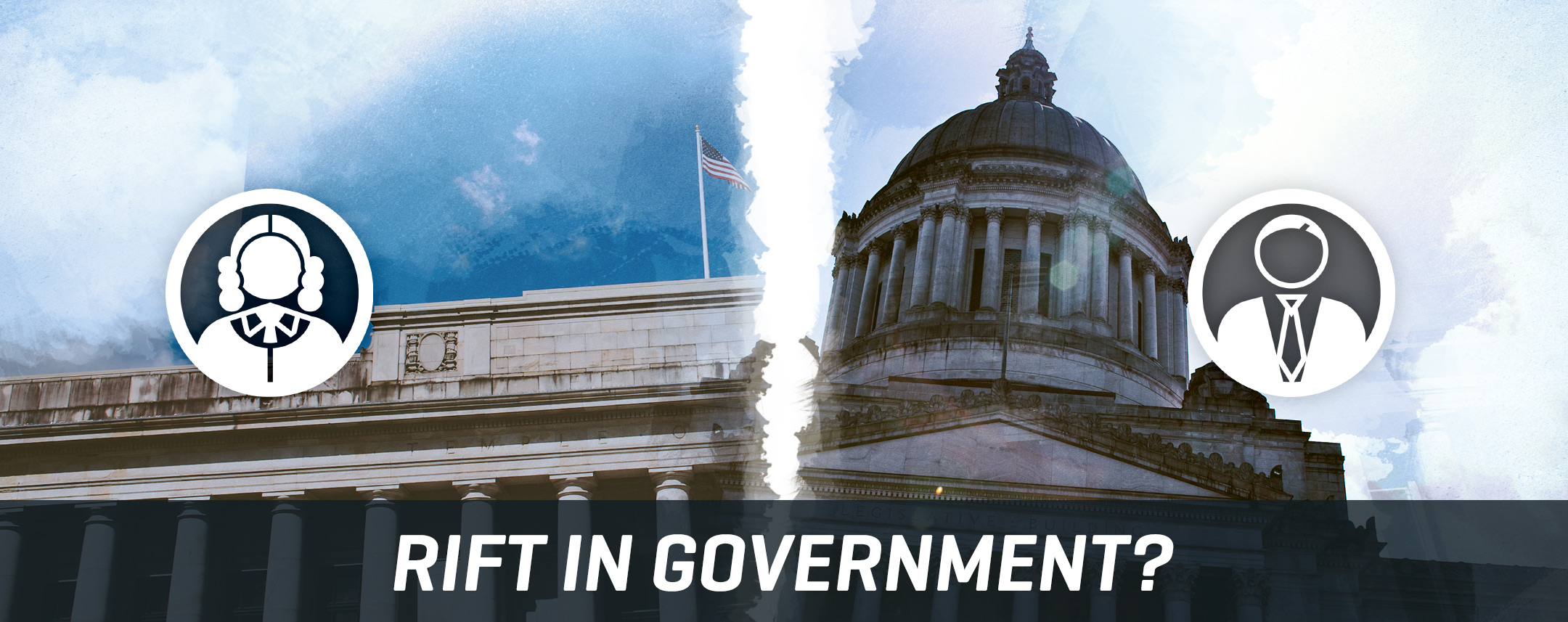On September 3rd, the attorney for state lawmakers was called before the State Supreme Court for a stern scolding and some terse questioning.
An attorney for labor unions and others seeking increased funding urged the court to find the legislature in contempt and to order the legislature to finish a plan by December 31 or else face “unpleasant” sanctions like fines, orders specifying what to pass as the budget, or even shutting down the school system.
To explain why sanctions were unnecessary, the state’s attorney pointed out that the court has already been remarkably successful at getting the legislature’s attention. Significant increases have already been adopted including as much as $1 billion in new state education spending in the last budget. The attorney did admit more could have been done to give the court assurance that the 2018 deadline will be reached.
He pointed out that the question is not what the state needs to do, but how to provide the necessary resources. He offered the court assurance that lawmakers recognize the 2015 legislative session will be about making resources available for the next education spending steps.
What kind of resources are we talking about?
The court suggested in a January 9, 2014 orderthe legislature should have increased spending by $3.3 billion in the 2013-15 budget and $4.8 billion in the 2015-17 budget, rather than the roughly $1 billion the legislature actually came up with.
Additionally, the court cited a stakeholder report completed after the McCleary ruling was issued to suggest that employee wages should increase by $2 billion per biennium plus inflation. The court also echoed advocates’ concerns about a number of other needed expenditures and capital needs bringing the cost of the entire Christmas list to something like $6 billion in new spending for the upcoming 2015-17 two-year budget.
The irony—and the legislature’s foolishness—is that state lawmakers sent stakeholders off to committees to dream up these numbers rather than addressing real issues as they were identified. The compensation report wasn’t even completed until after the ruling, yet it appears in the court ruling like it is somehow binding.
$3 billion per year works out to $435 for every man, woman and child in the state of Washington each year. For a family of four, that is $1,740 in new taxes. If we exempted the 13 percent below the poverty line, each share becomes $500.
If the state taxed the Boeing Company for this sum, it would take more than half of the net income of the company’s entire global operations. Keep in mind that more than half of its operations are occurring outside the state of Washington.
I mention these theoretical examples to point out that the scale of the Christmas list the “stakeholders” are trying to force the legislature to fund. The current level of state funding from the state for public schools is about $7.5 billion per year.
The court, attorneys and lawmakers continue to pretend as though meeting these expectations is a simple matter of adjusting a few expenditures or closing some tax loopholes. It isn’t.
We are talking about a colossal increase in education spending of 40 percent or more.
Does the court grasp the very real possibility that citizens and their lawmakers may not give the spending advocates everything they want? In 2010, citizens considered a tax on the rich to provide $2 billion a year for education and social services. Only 36 percent supported it and it failed.
The Justices’ questions and stern talk seemed to skip details like the scale of the issue. Their writings—which mirror those of education spending advocates— seem to commit the state to expenditures as if they cost nothing more of real people than the ink on their orders.
What next?
The court will mull the competing requests for patience or punishment and issue an order. Perhaps it will start striking down the budget or other laws which do less than the court desires. Perhaps it will require another written plan and delay any consequences until after the budget is written in 2015.
It is extremely unlikely the stakeholders will get everything to which they feel entitled in new spending, so the question of court-issued consequences will need to be answered at some point.
I think the legislature should shake the Etch-A-Sketch of these Christmas list studies and redesign state and local spending from scratch in a manner which expands services but manages spending. Private providers should be heavily leaned upon to provide parent-desired services while reducing the snowballing cost of the public system. Local taxpayers should get levy reductions to offset state increases. Compensation should be redesigned to fund broader services, set new work expectations and reward attributes which provide benefit rather than merely age and unhelpful academic credentials.
The 2015 legislature should do what it thinks best rather than the allow itself to be bound by studies which are the ghost of some previous legislature. These kinds of actions will once and for all demonstrate that the court is not really in a position to specify how services are completed and funded.
And perhaps this court-ordered opportunity to rethink our system of education will let the state shake off the dominating role of employee interests in our education policies.











